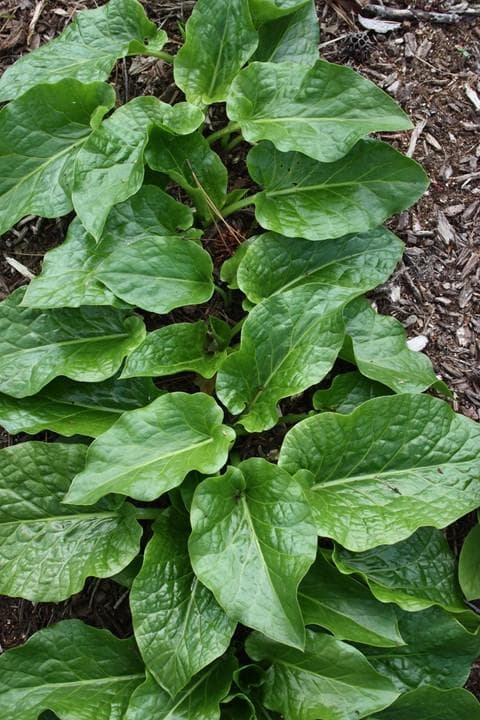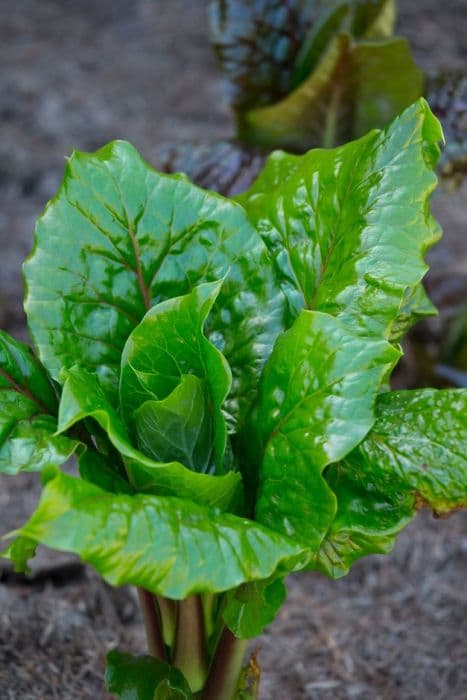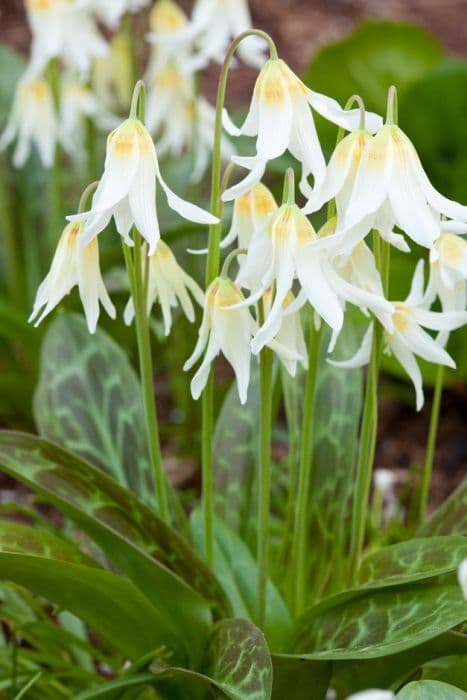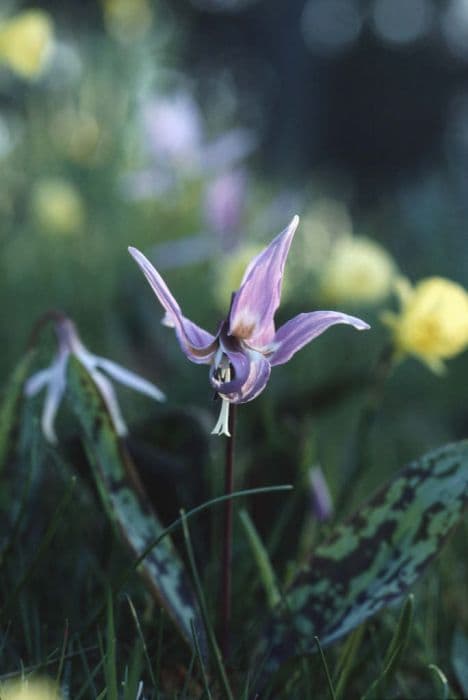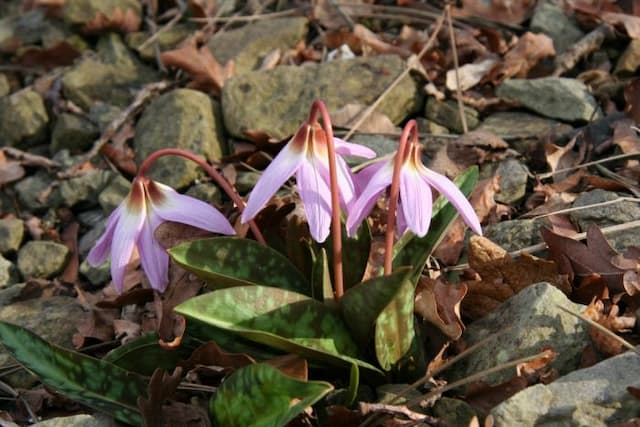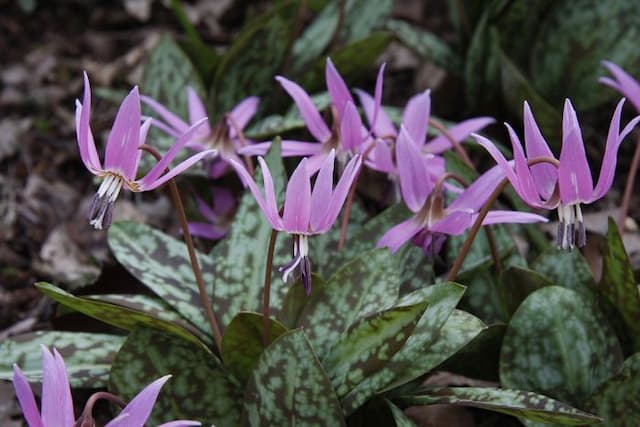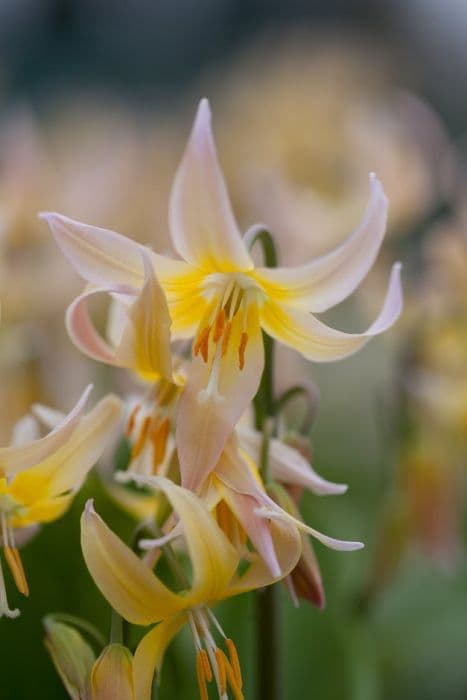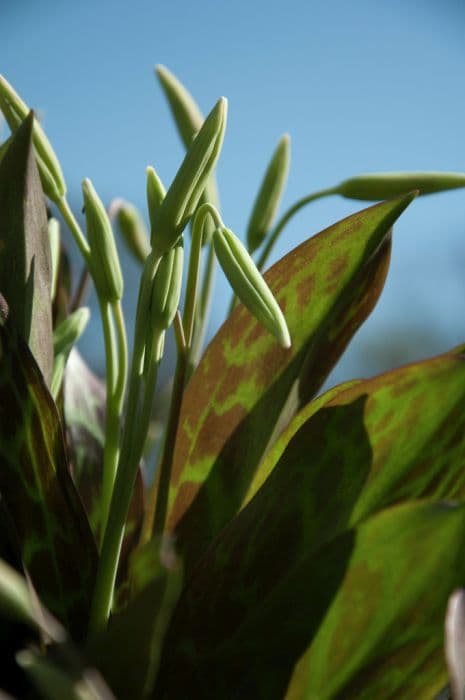Tulip 'Ancilla' Tulipa 'Ancilla' (12)

ABOUT
'Ancilla' is a bulbous perennial to 20cm, with wavy-edged lance-shaped leaves and erect soft pink flowers flushed rose-red outside, white within with a red basal ring
About this plant
 Names
NamesSynonyms
Ancilla Tulip, Tulip 'Ancilla', Water Lily Tulip.
Common names
Tulipa 'Ancilla'.
 Characteristics
CharacteristicsLife cycle
Perennials
Foliage type
Deciduous
Color of leaves
Green
Flower color
White
Height
6 inches (15 cm)
Spread
3 inches (8 cm)
Plant type
Bulb
Hardiness zones
3
Native area
Central Asia
Benefits
 General Benefits
General Benefits- Enhanced Aesthetic Appeal: Tulipa 'Ancilla', commonly known as Ancilla Tulip, brings vibrant colors and delicate shapes to gardens, enhancing visual interest.
- Seasonal Interest: Blooms in early to mid-spring, providing one of the first splashes of color after winter.
- Attracts Pollinators: Invites bees and other beneficial insects, aiding in the pollination of gardens.
- Suitable for Containers: Ideal for potting, allowing for decorative flexibility on patios, balconies, and other spaces.
- Low Maintenance: Requires minimal care once established, making it user-friendly for novice gardeners.
- Naturalizing: Over time, Ancilla Tulips can spread and naturalize in the landscape, providing more blooms with each passing year.
- Versatile Planting: Can be planted in flower beds, borders, and as underplanting for taller bulbs or shrubs.
- Compact Size: Their smaller stature makes them perfect for planting at the front of beds or in small garden spaces.
- Drought Tolerant: Once established, they are relatively tolerant of dry conditions.
- Cold Hardy: Capable of withstanding cold winters, making them suitable for a variety of climates.
- Cut Flower Potential: Stems can be cut and used in floral arrangements, bringing the beauty indoors.
- Varied Landscaping Use: Works well in rock gardens, cottage gardens, and formal plantings.
 Medical Properties
Medical PropertiesThis plant is not used for medical purposes.
 Air-purifying Qualities
Air-purifying QualitiesThis plant is not specifically known for air purifying qualities.
 Other Uses
Other Uses- The petals of Tulip 'Ancilla' can be used in salads for an unusual, colorful garnish as they are edible, provided they haven't been treated with pesticides.
- Tulips can be used in dye making, with 'Ancilla' petals offering shades of pink to purple depending on the mordant used.
- During the 17th century, tulip bulbs were often more valuable than gold in Holland, leading to a period known as "Tulip Mania."
- Tulip petals can be used in crafts, such as for making homemade paper or pressed flower art.
- The bulbs of Tulips can be used in a technique called "forcing" to bloom indoors during winter for a splash of color during the cold months.
- 'Ancilla' Tulip petals can serve as natural confetti for festive occasions such as weddings or eco-friendly events.
- Gardeners can practice Tulip 'Ancilla' bulb planting as a horticultural therapy activity to improve mental well-being.
- Tulip 'Ancilla' can be used in photography as a subject for macro photography due to its intricate patterns and colors.
- Cut Tulip 'Ancilla' stems can serve as an organic water level indicator in clear vases as they can bend towards the water source as they continue to grow slightly even after being cut.
- Tulip 'Ancilla' can be a muse for artists and poets, being a symbol of spring’s arrival, and inspiring paintings, poems, and other works of art.
Interesting Facts
 Feng Shui
Feng ShuiThe Tulip is not used in Feng Shui practice.
 Zodiac Sign Compitability
Zodiac Sign CompitabilityThe Tulip is not used in astrology practice.
 Plant Symbolism
Plant Symbolism- Love: Tulips are often associated with perfect love, with different colors representing various aspects of love.
- Rebirth: As one of the first flowers to bloom in spring, tulips symbolize new beginnings and rebirth.
- Charity: The 'Ancilla' tulip, with its gentle appearance, can represent caring and giving, relating to acts of charity.
- Forgiveness: Giving tulips, including the 'Ancilla' variety, can be a way to ask for forgiveness or to express regret.
 Water
WaterTulips, including 'Ancilla', should be watered deeply enough that the water reaches the bulbs, which is generally a few inches beneath the soil surface. During the active growth period, in the spring, water them with about half a gallon per square yard every week if there has been no significant rainfall. After they bloom and the leaves begin to yellow, gradually reduce watering. Tulips need less water after they go dormant and prefer a dry rest in the summer. Overwatering, particularly after blooming, can lead to bulb rot.
 Light
LightTulips, such as 'Ancilla', thrive in full sunlight, which means they should receive at least 6 hours of direct sunlight each day. A south-facing spot is usually ideal in the Northern Hemisphere. However, in particularly hot climates, they can benefit from light afternoon shade to protect them from the intense heat of the late day.
 Temperature
TemperatureTulips, including 'Ancilla', prefer cooler temperatures and can survive winter conditions down to about 14°F once they are dormant. The ideal temperature range for active growth is between 60°F and 70°F. They require a period of cold winter chill to bloom properly, which means temperatures below 55°F for several weeks.
 Pruning
PruningTulips, such as 'Ancilla', should be deadheaded after the flowers fade to prevent seed production, which can drain energy from the bulb. However, leave the foliage in place until it turns yellow and dies back naturally. This is typically the only pruning required for tulips. The best time for pruning is late spring or early summer, after blooming has finished.
 Cleaning
CleaningAs needed
 Soil
SoilTulips, including Tulipa 'Ancilla', prefer well-draining, neutral to slightly acidic soil with a pH of around 6.0 to 7.0. A good soil mix consists of loamy garden soil, compost, and sand to ensure proper drainage.
 Repotting
RepottingTulips typically do not require frequent repotting since they grow from bulbs; however, they should be lifted and divided every 3-5 years to prevent overcrowding and to maintain plant vigor.
 Humidity & Misting
Humidity & MistingTulips, such as Tulipa 'Ancilla', do not have specific humidity requirements and are quite adaptable, but they thrive best in outdoor conditions with natural humidity levels.
 Suitable locations
Suitable locationsIndoor
Place in bright, indirect light and cool temperatures.
Outdoor
Plant bulbs in fall, full sun to partial shade, cool soil.
Hardiness zone
3-8 USDA
 Life cycle
Life cycleTulipa 'Ancilla', also known as the Ancilla Tulip, begins its life cycle as a bulb planted in the fall before the first frost. During the winter, the bulb undergoes a chilling period which is necessary for subsequent growth. In early to mid spring, the bulb sprouts and produces stems, leaves, and a single, showy flower often marked by a distinct color contrast at the base, which is one of its distinguishing features. After flowering, the plant goes into a period of senescence, where the foliage dies back, and the plant directs energy back to the bulb to prepare for dormancy. Throughout the summer, the tulip remains dormant underground, conserving energy for the next growing season. The life cycle is completed annually, with the bulb re-sprouting each spring to repeat the process.
 Propogation
PropogationPropogation time
Spring
The most popular method of propagating Tulipa 'Ancilla', commonly known as the 'Ancilla' tulip, is through the division of bulbs. This is typically done in the fall, when the plants are dormant. Gardeners carefully dig up the mature bulbs and gently separate the smaller, offset bulbs, which have formed at the base of the parent bulb. These offsets are then planted at a depth about 3 times their height, usually around 6 to 8 inches (15 to 20 centimeters), in well-draining soil where they can receive full to partial sunlight. With the right care, these bulbs will start to grow roots before winter sets in and will bloom the following spring.
